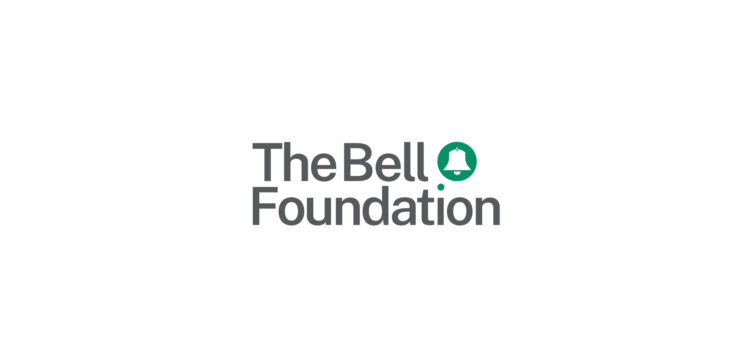Intervention Groups: Supporting Secondary EAL Learners Beyond the Classroom (Webinar)
- Date
- 16 May 2024
- Time
- 4:00pm
- Price
- Free
- Type
- Webinar

Language is acquired through social interaction, making classroom conversations essential for language development. However, much of the dialogue that occurs in the classroom is very limited. For example:
And the conversation ends.
Enhanced conversations, on the other hand, occur when learners propose ideas (explain, interpret, imagine, justify, etc.), provide evidence and challenge each other. They occur when learners encourage each other to elaborate, clarify fuzzy concepts and build on each other’s ideas.
Teachers can strengthen the quality of conversation in any subject area by explicitly teaching three features of enhanced conversation and the language or ‘talk moves’ that are associated with them (Zwiers, 2019).
Once learners are familiar with the different talk moves and can effectively use them during conversations, the sentence starters can be withdrawn (see Enhancing Mathematical Conversations).
The following activities allow learners to practise using features of enhanced conversations.
Use anchor charts or table mats to display the three features of enhanced conversations along with visual representations and associated language stems for learners to refer to during conversations.
| Building ideas | Clarifying ideas | Supporting ideas |
|---|---|---|
| ‘I’d like to add onto what ___ said…’, ‘What do you think...?’ | ‘Can you explain why...?’, ‘Can you say that again?’ | ‘Can you give an example?’, ‘How do you know...?’ |
To encourage active listening, assign hand gestures to each feature and ask pupils to use a gesture (instead of simply raising hands) to indicate whether they want to add to, clarify or support what their classmate has just said. The gestures will need to be explicitly taught and practised being used during whole class discussions before use in smaller groups.
| Building ideas | Clarifying ideas | Supporting ideas |
|---|---|---|
| E.g., layer hands (or fists) on each other and build up | E.g., pull hands apart | E.g., place index finger on the little finger of the other hand |
In a typical TPS, one learner shares an idea, and the other learner shares an idea and then they are usually finished talking. Improve the quality of the TPS by requiring learners to ask each other at least one clarifying question and one supporting question during the pair share (see ‘talk moves’ above).
Conduct three sets of elaborated pair shares (above) around the same topic or problem in a row, using different partners each time. As learners go along gaining new information from three different partners, allow them time to add to or edit their original idea making it stronger and clearer each time.
The dominant teacher-pupil talk sequence in a classroom follows an Initiation-Response-Evaluation (IRE) pattern where, (1) the teacher initiates talk, (2) the learner responds, and (3) the teacher evaluates the response (Quigley, 2016). For example, (T) 'What does the image represent?', (L) 'Freedom', (T) 'Right, good'. To encourage more dialogue and extend learners’ thinking, change the 3rd turn. For example, (T) 'What does the image represent?', (L) 'Freedom', (T) 'Tell us more. What makes you think that?'
These are communicative activities where learners have different bits of information that they need to convey orally to others in order to accomplish a task; simulating an authentic purpose for communication. Examples include barrier games, opinion cards and jigsaw activities.
Teachers can also use talk moves to facilitate enhanced conversations through asking targeted questions.
See The Bell Foundation’s Great Ideas page on Questioning Strategies for further information.
Even learners who are new to English can participate and benefit from enhanced conversations when the following factors are taken into account.
Enhanced conversations need to be intentionally planned for and built around the curriculum where pupils are purposefully solving problems, exploring topics and co-constructing ideas around interesting projects. Make sure to carefully plan for meaningful conversations to occur.
It is primarily through conversational interaction that language development occurs. However, some types of classroom talk generate more productive contexts for learning than others (Mercer and Littleton, 2007). Research demonstrates that learning is enhanced when classroom conversations include features that are characteristic of authentic and elaborated dialogue (Zwiers, 2019). Moreover, constructive classroom conversations build confidence, self-esteem and promote healthy relationships among learners (Alexander, 2001).
Enhanced conversations also provide learners who are newer to English with increased opportunity to hear the new language, including discipline specific language, and to produce and practise using English in a variety of contexts and in meaningful ways. These types of repetitive encounters support language development (Jones et al., 2018). Finally, in coming to grips with subject area knowledge, learners will need to know and be able to use the patterns of language that allow them to explore, clarify and imagine new ideas through enhanced conversation.
Jones, P., Simpson, A. and Thwaite, A. (2018). Talking the Talk. Newtown, Australia: Primary English Teaching Association Australia.
Mercer, N. (2012). Exploratory talk – Professor Neil Mercer. [online] Available at: https://www.slideshare.net/margarubiosoto/exploratory-talk-in-professor-neil-mercer [Accessed on 10 November 2022].
Mercer, N. and Littleton, K. (2007). Dialogue and the Development of Children’s Thinking. Routledge.
Quigley, A. (2016). The Confident Teacher : Developing successful habits of mind, body and pedagogy. Routledge.
Scott, S. (2021). [online] Collaborative Learning Project. Available at: http://www.collaborativelearning.org/ [Accessed 10 Nov. 2022].
Zwiers, J. (2019). Next steps with academic conversations : new ideas for improving learning through classroom talk. Portsmouth, New Hampshire: Stenhouse Publishers.